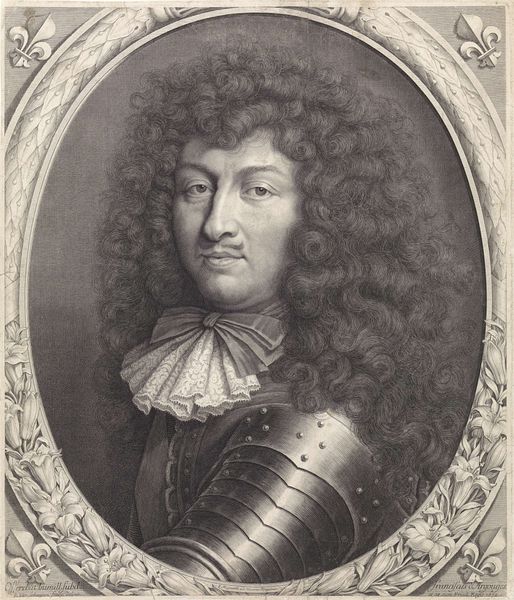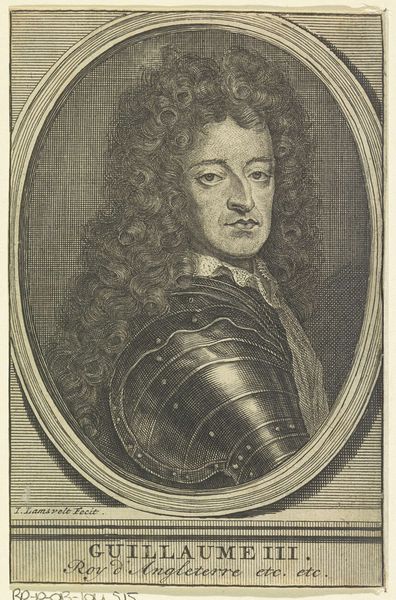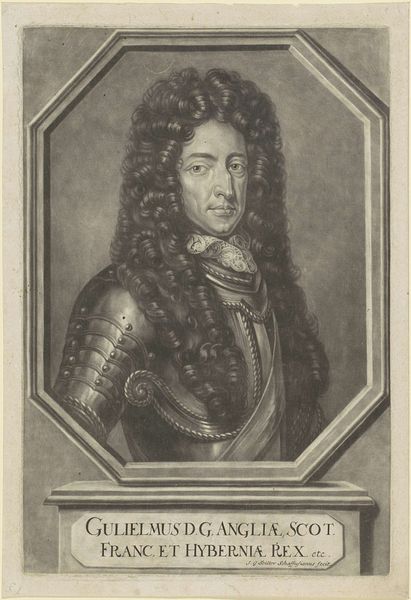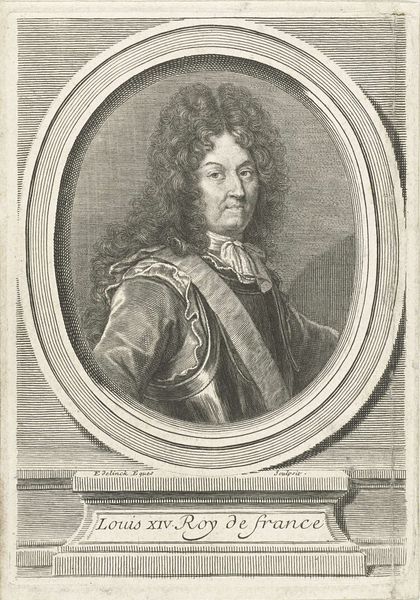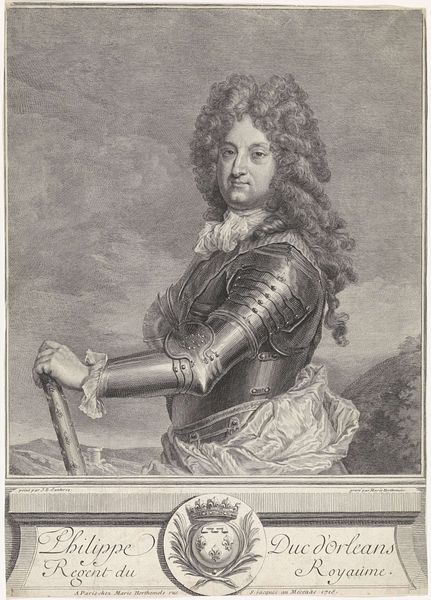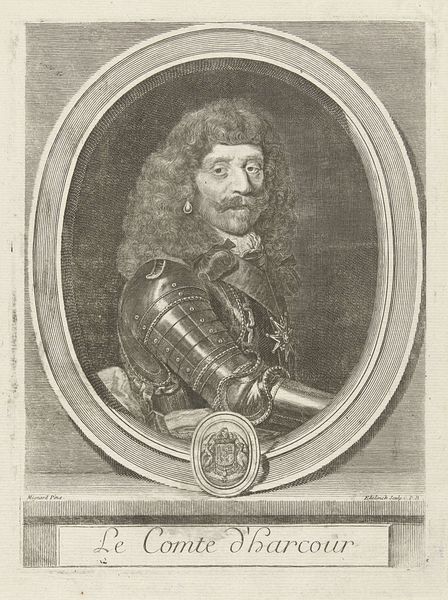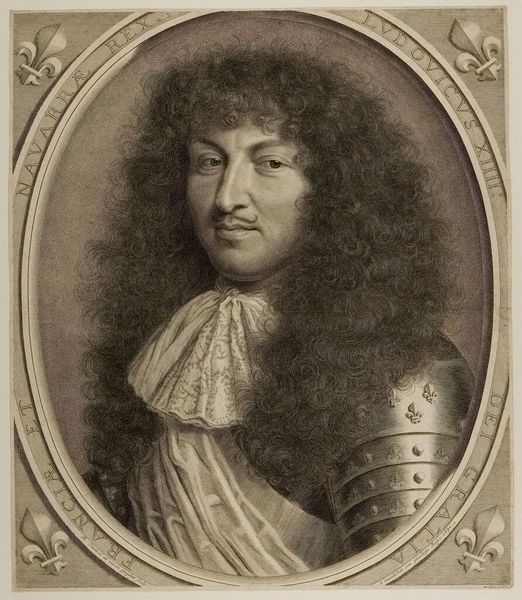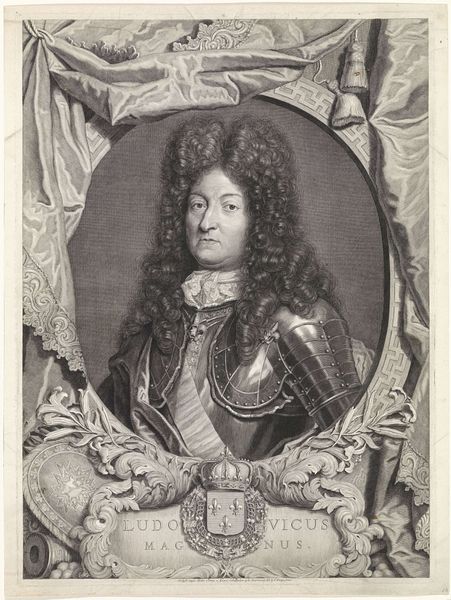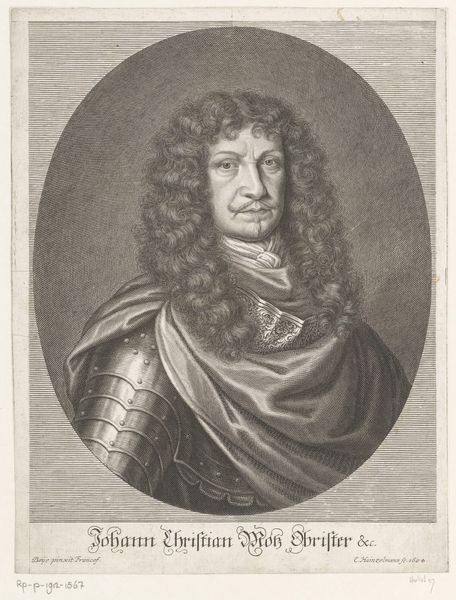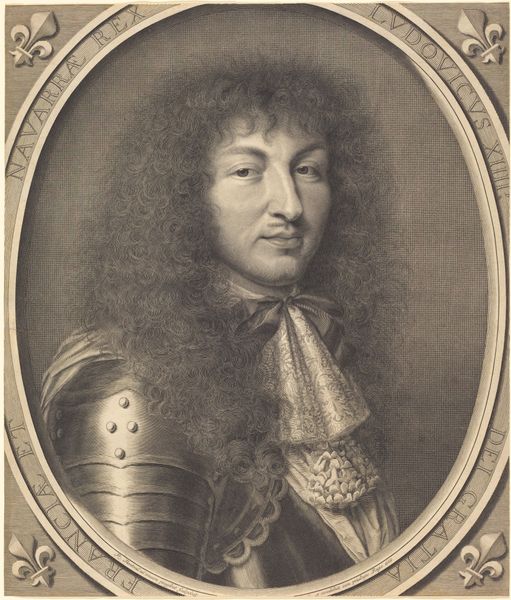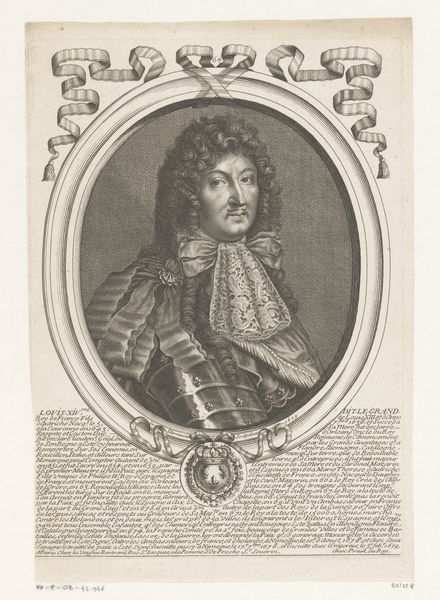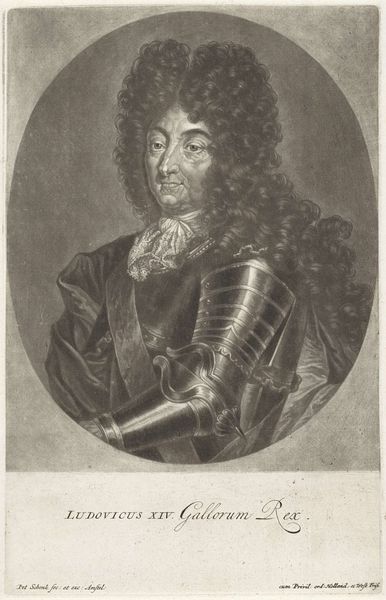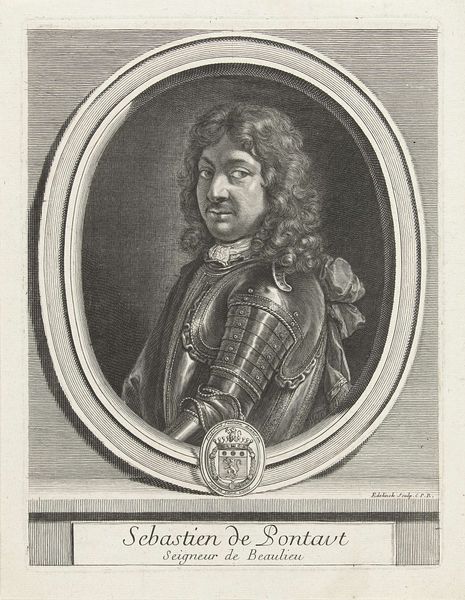
drawing, pen, engraving
#
portrait
#
drawing
#
baroque
#
old engraving style
#
charcoal drawing
#
charcoal art
#
pencil drawing
#
framed image
#
pen
#
history-painting
#
engraving
Dimensions: height 291 mm, width 222 mm
Copyright: Rijks Museum: Open Domain
Curator: The detail in this engraving is really striking, especially the contrast between the smoothness of the metal armor and the softness of the wig. Editor: Yes, there’s an immediate theatricality. This piece, "Portret van Lodewijk XIV, koning van Frankrijk" (Portrait of Louis XIV, King of France) from 1681, depicts a figure central to the narrative of absolutism in Europe, and portraits like these played a critical role in constructing and disseminating the image of royal power. Curator: Right, it's less about raw skill than projecting authority. You can almost feel the weight of expectation and performance imbued within the image. That wig itself becomes a symbol of power! Editor: Absolutely. Consider how the court of Louis XIV became a stage where identity, gender, and power were carefully constructed through clothing, ritual, and art. Curator: But also, let’s think about the technology of reproduction at the time. An engraving made with pen on a metal plate allowed this image to circulate broadly, furthering that projection. It gives ordinary people access to this monarch, although, of course, still mediated by artistic interpretation. Editor: Precisely! Jan van der Bruggen here isn't merely representing Louis XIV; he's actively participating in building the mythology around him. Curator: But also solidifying norms of masculinity, gender roles. Think about how women and non-binary people were actively pushed to the sidelines to uphold the status quo during that period. It all seems present in this singular drawing. Editor: It's true, the very nature of portraiture serves specific socio-political functions, defining status, legitimizing power, and, often, solidifying the exclusion of others. These pieces contribute directly to solidifying hierarchies, and by reading them critically, we understand how systems of domination gain strength. Curator: And how artists of that time participated, knowingly or unknowingly, in enforcing them. I’m grateful for how much detail can be revealed by considering how power dynamics affect artwork and audiences alike. Editor: Yes, approaching art with these questions expands our ability to connect with and think critically about history.
Comments
No comments
Be the first to comment and join the conversation on the ultimate creative platform.
